Building on a Mission: Houston’s Mission Control Center

NASA’s Mission Control Center (MCC) in Houston has served as the nerve center for American human spaceflight since June 1965. Perhaps the most visible aspect of human spaceflight, the MCC is the familiar scene on television of flight controllers monitoring all aspects of a mission on their consoles, with large screens displaying the location of the spacecraft on a world map. Following the establishment of the Manned Spacecraft Center (MSC), now NASA’s Johnson Space Center, in 1961, and construction of the new facility, the mission control function shifted from Cape Kennedy in Florida to Houston.
The concepts of mission control developed in the early years of the space program are still in use today, even as human missions have grown more complex and now include international and commercial partners. Starting with missions lasting only a few hours or a few days, monitoring of the International Space Station is an ongoing, around-the-clock activity. Over the decades, upgrades to the MCC have enabled it to keep up with the demands of the ever-growing complexity of America’s human spaceflight programs.
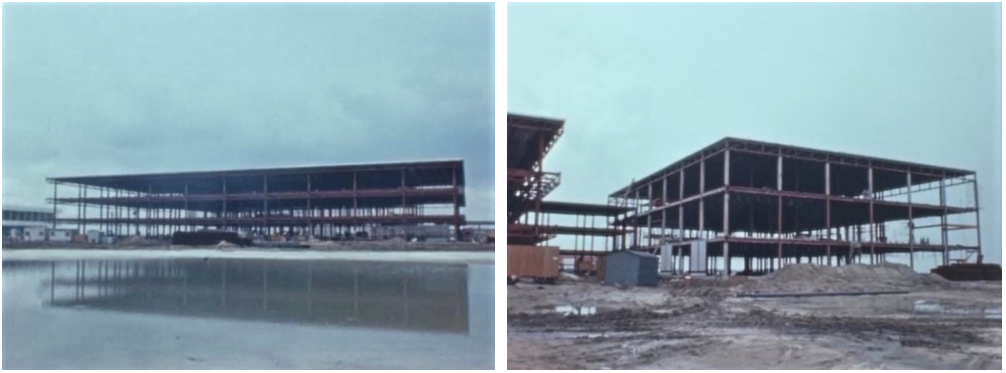
Two views of early construction of what was then called the Integrated Mission Control Center in June 1963. Left: The administration wing. Right: The mission operations wing. Credits: NASA
In the early days of America’s space program, NASA’s first flight director, Christopher C. Kraft, developed the concept of a mission control center to monitor human spaceflights. The first control center at the Cape Kennedy Air Force Station in Florida, now called the Cape Canaveral Space Force Station, monitored the Mercury and early Gemini missions. With the establishment of the MSC in Houston in 1961, the new facility’s main tasks included the control of America’s human spaceflights. The new MCC offered many advantages over the older control center at the Cape, including the flexibility needed for the more complex Gemini missions — especially the Apollo Moon-landing missions. Work on the MCC, located in MSC’s Building 30, began in late 1962 with the laying of its foundation. Further construction took place between June 1963 and November 1964.
In its original form, the three-story MCC included an administration wing of offices and conference rooms, and a mission operations wing that housed two Mission Operations Control Rooms, or MOCRs, the two wings joined by a lobby wing. Workers installed the MCC’s real-time computer complex, the brains of the installation, in April 1964. Two months later, employees moved from temporary facilities in the Stahl and Myers and Houston Petroleum Center buildings in southeast Houston into Building 30 to begin testing the equipment.
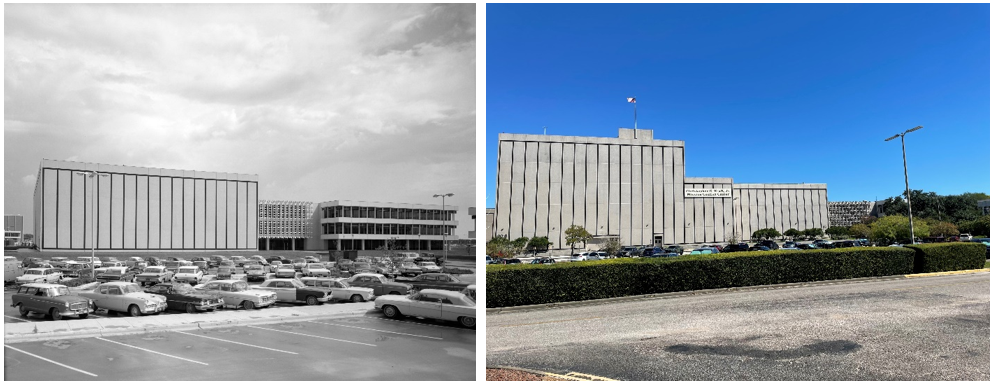
Then and now. Left: The Mission Control Center as it appeared in June 1964. Right: The MCC in September 2021, showing the addition of the five-story station operations wing on the left side of the image. Credits: NASA
By January 1965, enough of the equipment had been installed and tested that a team of controllers could monitor the flight of the uncrewed Gemini 2 mission, with primary control of the flight still residing in the Gemini Control Center at Cape Kennedy.
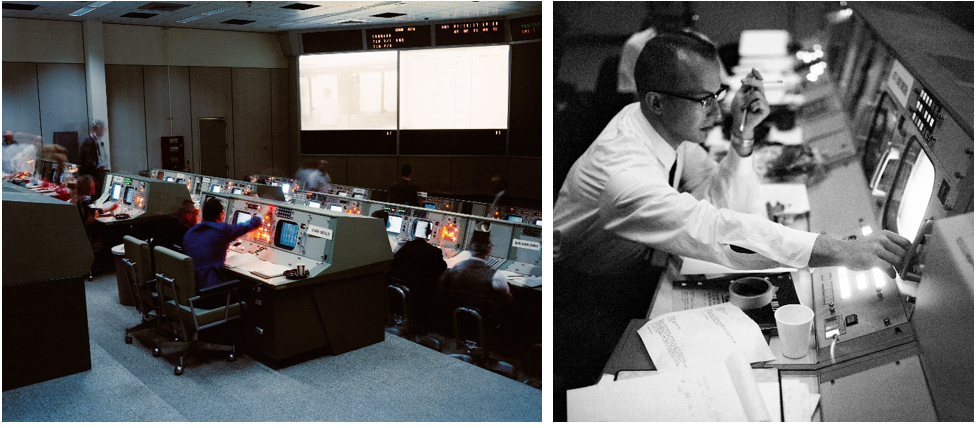
Left: View of the Mission Operations Control Room during the uncrewed Gemini 2 mission on Jan. 19, 1965. Right: One of the flight controllers monitoring the Gemini 2 mission. Credits: NASA
During the March 23, 1965, Gemini 3 mission, the first crewed Gemini flight, the MOCR served in a backup capacity to the Gemini Control Center at the Cape. Following that successful activity, on April 9, NASA Associate Administrator for Manned Space Flight George E. Mueller announced the change of primary flight control for human space missions from the Cape to the new MCC in Houston. He also announced that Kraft would serve as mission director for Gemini IV and as one of the three flight directors for the mission. John D. Hodge and Eugene F. “Gene” Kranz would serve as the other two flight directors during the historic four-day mission that included America’s first spacewalk. Hodge and Kranz both served as flight directors with Kraft during Mercury missions.
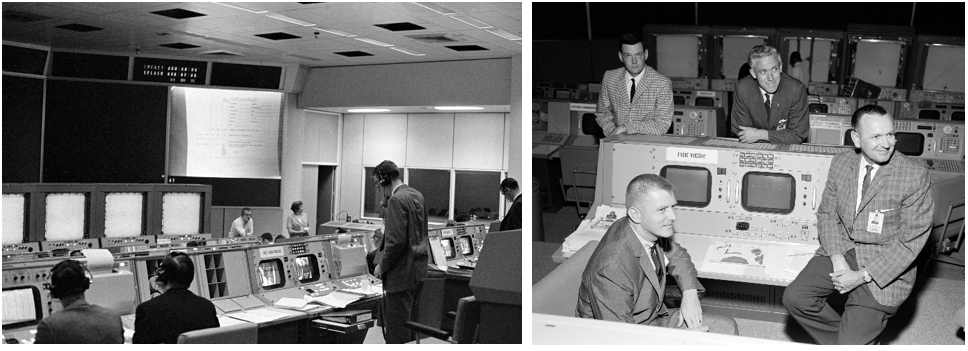
Left: During Gemini 3, the first crewed Gemini mission on March 23, 1965, the Mission Operations Control Room (MOCR) served in a backup capacity to the primary control center in Cape Kennedy, Florida. Right: Flight Directors Eugene F. “Gene” Kranz, Glynn S. Lunney, and John D. Hodge, with the original flight director, Christopher C. Kraft Jr., in the MOCR in February 1965. Credits: NASA
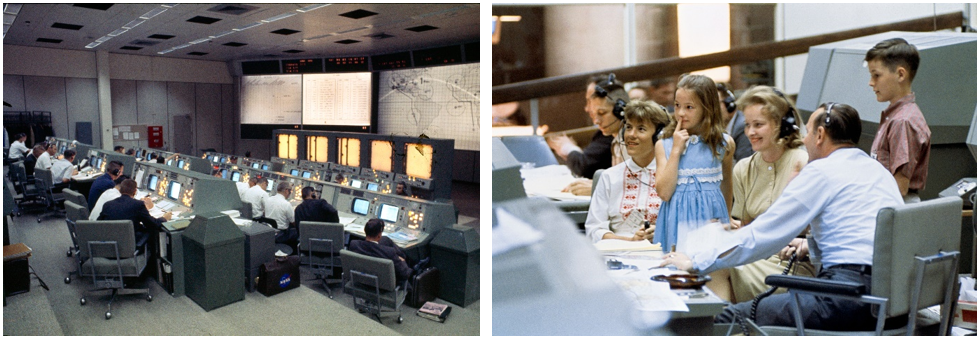
Left: The MOCR during the Gemini IV mission in June 1965, the first mission controlled from the Houston facility. Right: Families of the Gemini IV astronauts talk with them from the MOCR. Credits: NASA
With two operational MOCRs, following Gemini IV, the remaining eight Gemini missions were controlled from the room on the third floor of Building 30’s mission operations wing. Engineers configured the MOCR on the second floor to monitor the early uncrewed Apollo test flights in 1966. After completion of the Gemini program in November 1966, the third-floor MOCR was modified to support the upcoming Apollo missions, with the two rooms dividing the work. Following the historic Apollo 11 Moon landing mission in July 1969, controlled from the third-floor MOCR-2, the second-floor MOCR-1 was temporarily deactivated until October 1971. It was then used to monitor the Skylab and Apollo-Soyuz Test Project missions, while MOCR-2 was deactivated in May 1973.

Left: Jubilation in the MOCR following the Apollo 11 splashdown. Right: Engineers and managers confer in the MOCR shortly after an explosion crippled Apollo 13 on its way to the Moon. Credits: NASA
In the mid-1970s, in preparation for the space shuttle era, the MCC received upgrades to its computer systems. The third-floor MOCR-2, renamed the Flight Control Room-2 (FCR-2), monitored the Approach and Landing Test flights of Space Shuttle Enterprise in 1977, following which, it and the second-floor control room, redesignated FCR-1, received upgrades to support the first space shuttle orbital missions. In April 1981, FCR-1 supported the STS-1 mission of Space Shuttle Columbia. In November 1982, FCR-2 supported its first mission, STS-5.
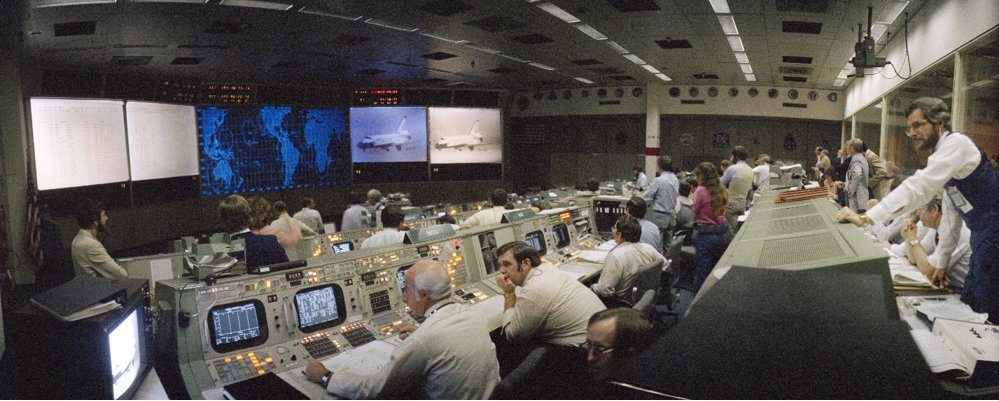
The MOCR following the landing of Space Shuttle Columbia, concluding the STS-1 mission. Credits: NASA
In December 1989, both control rooms received significant upgrades in the form of new glass display screens and image projectors. In December 1992, FCR-2 was decommissioned as an active control room and returned to its Apollo-era configuration and made accessible to visitors, while FCR-1 continued to support shuttle missions until 1996. Beginning in 1992, a new control room, called the White FCR in the newly built five-story station operations wing, the largest addition to the MCC, began partially supporting space shuttle missions. Following a two-year transition, White FCR took over sole operation of shuttle missions with the STS-77 mission in May 1996 and until the end of the program in 2011. The Blue FCR in the new wing supported space station operations from 1998 until 2006, when that function moved into the newly renovated FCR-1 with all-new state-of-the-art equipment. Today, the White FCR is used for simulations of upcoming flights around the Moon as part of the Artemis program.
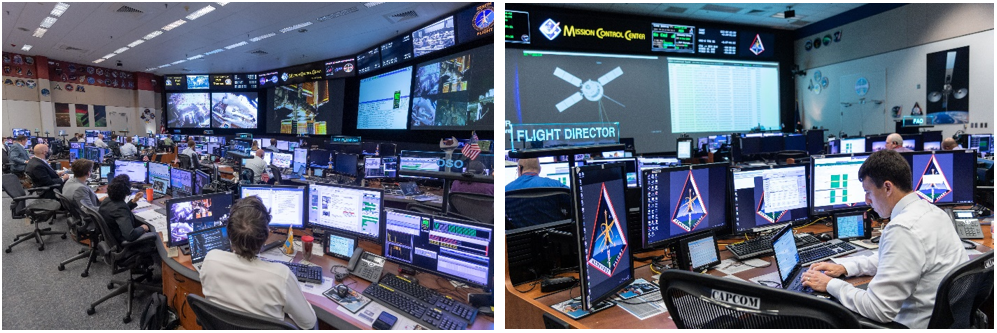
Left: Flight controllers monitor a spacewalk on the space station from the Flight Control Room-1 (FCR-1) in September 2021. Right: Controllers conduct a simulation of the Artemis 1 mission in the White FCR in June 2021.
The MCC is truly an historic place, serving as the nerve center of the American human spaceflight program for more than five decades. It bore witness to great triumphs — such as the first human Moon landing — as well as tragedies such as the Challenger and Columbia space shuttle accidents.
In October 1985, the U.S. Department of the Interior designated MOCR-2 as a National Historic Landmark, known as the “Apollo Mission Control Center.” On April 4, 2011, the building was renamed the “Christopher C. Kraft, Jr. Mission Control Center” in honor of the man who created the concepts still in use today in human spaceflight control.
To celebrate the 50th anniversary of the Apollo 11 Moon landing, the historic MOCR-2 underwent a two-year restoration to return the room to a configuration identical to the one on July 20, 1969. A ribbon-cutting ceremony was held on June 28, 2019, which was attended by NASA Administrator Jim Bridenstine and Kranz. The restored facility can be viewed by the public on tours from Space Center Houston.
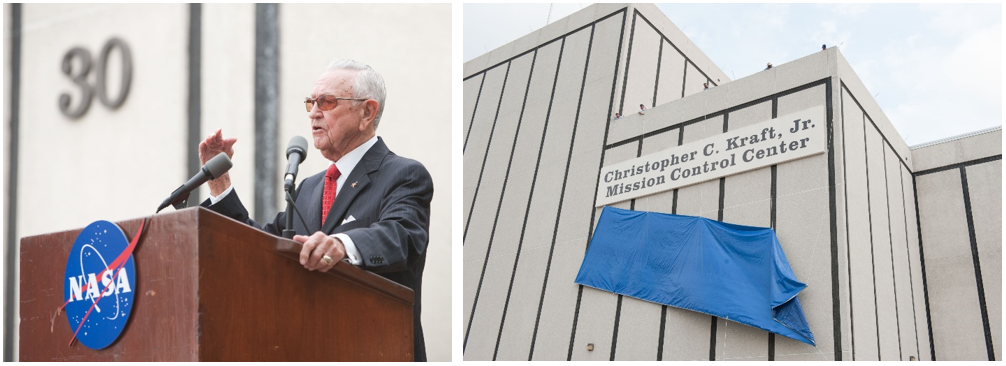
Left: In 2011, Christopher C. Kraft Jr. speaks at the ceremony naming Building 30 in his honor. Right: The unveiling of the sign bearing Kraft’s name. Credits: NASA
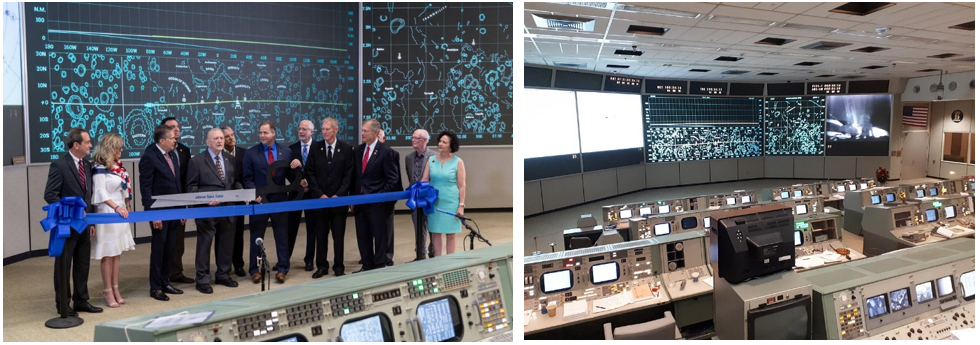
Left: Ribbon-cutting ceremony for the restored Apollo Mission Control Center on June 28, 2019. Right: Overview of the restored room. Credits: NASA
To be continued …







